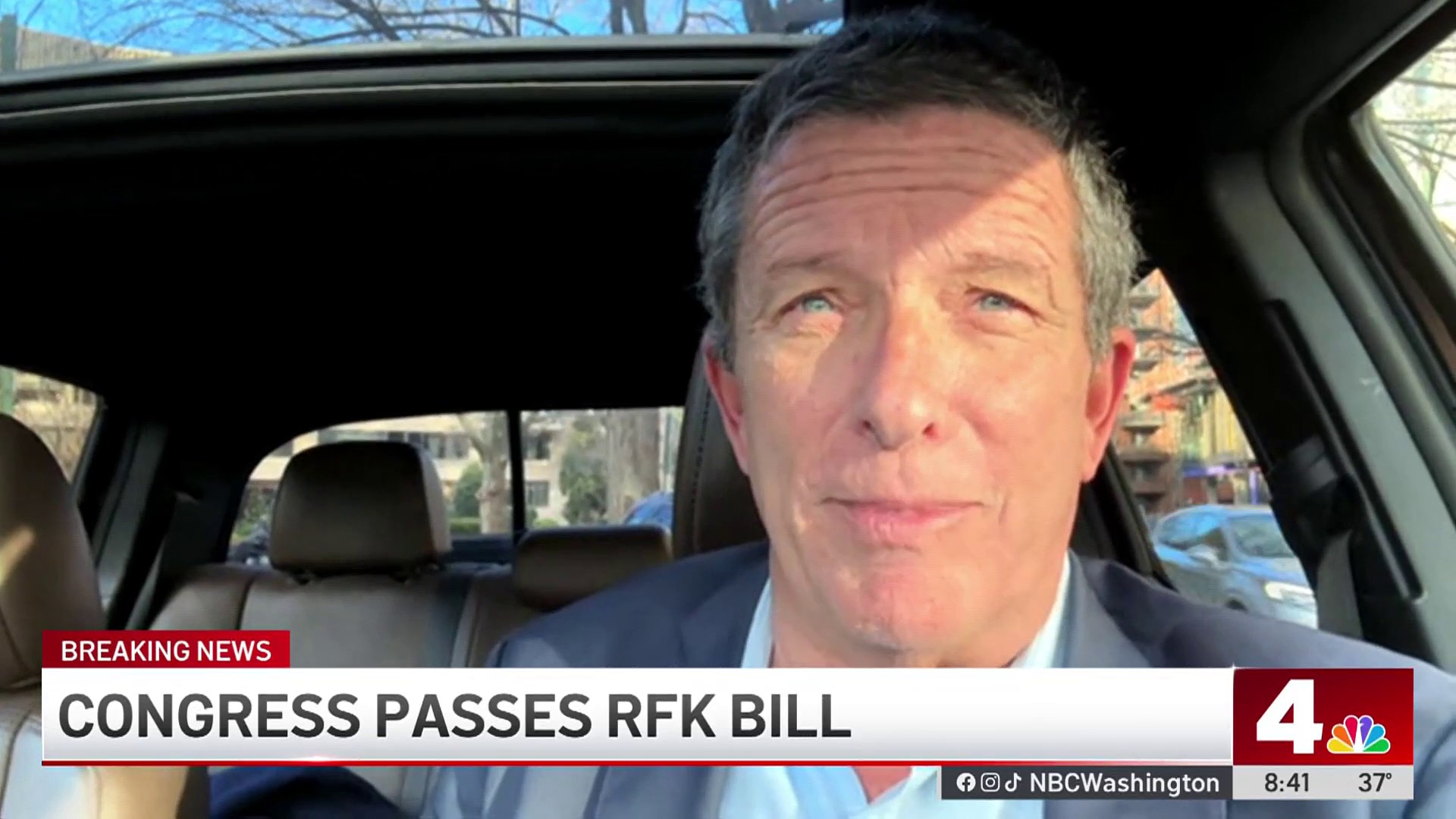Safety advocates are raising questions about whether speed cameras on Maryland Route 210 are doing enough to capture dangerous drivers after a snapshot of citation data suggests many are evading tickets.
A report prepared by Prince George’s County police and obtained by the News4 I-Team reveals that, between April and October 2022, no drivers photographed traveling 90 mph or more were issued a speeding citation. An I-Team analysis of that period also shows only about 41% of all photographed speeders were issued a citation.
“They're not catching the people that are most dangerous to the rest of us, the people doing over 100 miles an hour,” said Ron Weiss, a member of the Maryland 210 Traffic Safety Committee. “Those are the people we need to get to change their behavior.”
Weiss was among those who spent years lobbying the Maryland General Assembly to change state law to allow automated enforcement on Route 210, a 14-mile roadway commonly known as the “Highway of Death” for its high number of vehicle and pedestrian crashes.
We've got the news you need to know to start your day. Sign up for the First & 4Most morning newsletter — delivered to your inbox daily. >Sign up here.
Though red light and speed cameras are commonly used in school and construction zones throughout Maryland, lawmakers had to approve their use outside of those zones. In 2018, lawmakers greenlighted a single speed camera on Rt. 210 and approved three mobile speed cameras the following year.
“They're working. They're changing behavior, but they're not changing the behavior of the really bad speeders,” Weiss said.
The report, prepared by the police department’s Automated Enforcement Division (AED) last fall, raised a number of concerns with the speed camera program operated by the vendor Conduent. According to the report, the vendor was, at one point, “struggling to provide” comprehensive speeding and citation data on its website and “has still not fully addressed what appears to be a consistency problem in the data.”
Local
Washington, D.C., Maryland and Virginia local news, events and information
The report went on to say: “We still see zero citations for speeds greater than 89 mph” and that AED is “actively working with the vendor to try and understand this issue.”
It continued the enforcement division “wants to be sure that there isn’t some hidden technical limitation that prevents these cameras from capturing images of sufficient quality to generate citations for high-speed events. Issuing citations to these especially reckless drivers is critical.”
The vendor, Conduent, referred the I-Team to the police department for comment.
The police department declined a formal interview but said in a statement: “The ultimate goal of the program is to reduce speed on Route 210” and the program is meeting that goal “because the data has shown a reduction in speed in the locations that these cameras have been deployed.”
Police did not respond to the I-Team’s questions about whether they’ve addressed why no speeders going above 89 mph were cited, according to its report, or why only 40% of speeding events resulted in citations.
A November 2022 draft report about the program prepared by the department, however, states not all images of photographed speeders result in citations and that “there are several quality control measures in place to ensure that the data captured in the event is of high enough quality to justify a citation.” The same report explains an “event” is generated after the speed monitoring system records a vehicle traveling in excess of 12 mph above the speed limit.
Former AAA Mid-Atlantic spokesman John Townsend said while studies show the mere presence of cameras is proven to reduce overall speeding, he was surprised so many potential citations are being tossed.
Townsend speculated a technical problem could be preventing police, who are tasked with reviewing data captured by the cameras before citations are issued, from being able to definitively ascertain which car in a photograph is speeding.
“The most important thing is to have the camera – that is a deterrent,” Townsend said. “But when you have anomalies in the system where drivers are going 140 miles per hour and caught on camera … and they're not ticketed, that shows a lack of confidence in the data.”
Kaan Ozbay, director of the C2SMART transportation research center at New York University, said he isn’t familiar with the 210 program and thus it’s difficult to speculate why cameras may not be catching the fastest speeders without knowing more about the program’s internal quality controls.
Still, Ozbay said it’s possible the problem is as simple as physics when it comes to the fastest drivers.
“Everything has a physical speed,” he said. “The sensor has to sense the speed. It has to trigger the camera. The camera has to take the picture. Meanwhile, the car is moving.”
Automated enforcement programs have grown in popularity over the past few decades, with red light and speed cameras operating in nearly 200 jurisdictions throughout the United States, according to the Insurance Institute for Highway Safety.
Baltimore unveiled a speed camera program last year on Interstate 83, where Department of Transportation Interim Director Corren Johnson said officials have observed speeds exceeding 170 mph.
Instead of mobile cameras alongside the road, Johnson said I-83’s design led them to mount two fixed cameras on a pole high above traffic.
“It's most definitely having the impact that we hoped. We are seeing people slowing down,” she said of its early results.
Johnson, as well as the program’s operator, Verra Mobility, told the I-Team 97% of the violations captured by those two cameras have resulted in a citation being issued to motorists speeding 12 mph above the limit. The I-Team was unable to review the underlying data to understand how it may compare to Prince George’s County’s program.
“We're constantly monitoring the speed sentries, the cameras and immediately addressing any type of issues that might occur to ensure that we're getting that consistent rate,” Johnson said.
Traffic and law enforcement experts told the I-Team that, while research shows speed cameras help to reduce speeding overall, they’re just one tool in a multi-pronged strategy to combat dangerous driving.
Some also quietly grumbled that, even if citations were issued to each super speeder, the current $40 citation – which doesn’t count against a driver’s record or budge their insurance premiums – isn’t likely to change their behavior.
In a statement, a Prince George’s County police spokesman said the biggest challenge with the program has been that it’s only allowed to operate three mobile cameras, noting, “We believe the program could have a bigger impact if we could increase the number of cameras along Route 210.”
That could happen as the Maryland General Assembly is now considering two pieces of legislation that would increase the number of cameras on Route 210 and escalate fines for recidivist speeders.
Weiss said he’s also in favor of adding more speed cameras to the roadway but hopes changes can be made to help catch its most dangerous drivers.
“If we don't fix this problem, more people are going to die,” he said.
Reported by Tracee Wilkins, produced by Katie Leslie, and shot by Steve Jones and Jeff Piper.



